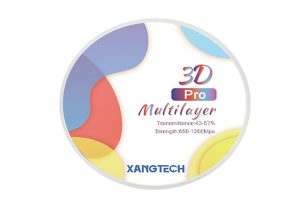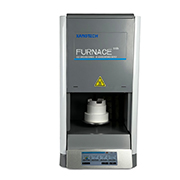Understanding Dental Milling Burs
What Are Dental Milling Burs?
Dental milling burs are must-have tools for dental milling machines. They cut and shape materials into exact dental restorations. These burs are made from tough stuff like carbide or diamond. They work with materials like zirconia, PMMA, wax, metals, and hybrid ceramics. They come in all sorts of sizes and shapes. This fits different needs in dental restoration work.
The Role of Milling Burs in Dental Restorations
Milling burs are super important for making dental restorations precise and quick. They let dental pros make crowns, bridges, veneers, and more with accuracy. The bur’s quality shapes the final product’s surface and fit. They make clean cuts. This eases stress on the material. Clean cuts help restorations last a long time.
Types of Dental Milling Burs
There are a few types of Dental milling burs, each for specific jobs:
- Flat-end burs: For flat surfaces.
- Ball-end burs: Awesome for shaping and finishing.
- Tapered burs: Perfect for detailed work in small spots.
Each type is built for certain tasks. This gives top-notch results.

Factors to Consider When Choosing a Dental Milling Bur
Material Compatibility of the Milling Bur
The bur has to work with the material you’re milling. A wrong but can mess things up or slow you down.
Milling Burs for Zirconia
Zirconia is a hard material. It needs sturdy burs that won’t break under pressure. Diamond-coated or carbide burs are popular. They’re strong and hold up well.
Milling Burs for PMMA and Wax
PMMA and wax are softer. They need sharp but less rough burs. These materials are easy to mill. This keeps the bur in good shape.
Milling Burs for Metal and Hybrid Ceramics
Metal and hybrid ceramics are tough. They need heavy-duty milling burs. Coated carbide or special diamond-coated burs are the go-to. They handle these strong materials nicely.
Size and Shape of the Milling Bur
The bur’s size and shape change how it works in dental tasks.
Common Shapes and Their Applications
- Cylindrical: For clearing out lots of material.
- Conical: For fine carving.
- Round: For polishing and smoothing edges.
Selecting the Right Size for Precision
The bur’s size decides how detailed it can get. Smaller ones are great for tiny details. They might take longer. Bigger ones mill faster but aren’t as precise.
Coating and Durability of the Bur
Coatings make burs work better and last longer. They cut down on friction and wear.
Benefits of Coated vs. Uncoated Burs
Coated burs, like those with diamond or titanium nitride, cut smoother and last way longer than uncoated ones. They stay sharp even after lots of use.
Longevity and Wear Resistance
Top-quality coated burs don’t wear out as fast. They cost more at first but save cash in the long run.

Matching Milling Burs to Your Machine and Workflow
Compatibility with Different CAD CAM Systems
Not all milling burs fit every CAD CAM system. Pick tools that match your machine’s specs.
Key Considerations for Machine-Specific Burs
- Make sure the bur fits right.
- Check what the manufacturer suggests.
- Confirm it works with your machine’s speed.
Optimizing Workflow Efficiency with the Right Tools
Choosing the right milling burs improves accuracy. It also makes work faster by cutting down on tool switches and milling time.
Maintenance and Care of Dental Milling Burs
Proper Cleaning Techniques for Prolonged Use
Cleaning keeps dental milling burs working well. After each use, clear of debris and gunk. Use an ultrasonic cleaner or a special cleaning solution. This gets rid of tiny bits. Don’t use harsh chemicals or rough tools. They can wreck the bur’s coating or shape. Dry the burs well after cleaning. This stops rust.
Identifying Signs of Wear or Damage
Check milling burs often to keep them sharp. Look for dull edges, chips, or uneven spots. A worn bur can mess up restoration precision. It can also stress the milling machine. Weird noises while milling might mean the bur is damaged or not fitted properly. Swap out worn burs fast. This protects the tool and the material.
Storing Your Milling Burs Correctly
Good storage makes milling burs last longer. Keep them in a clean, dry spot away from moisture or dirt. Use storage cases with separate slots. This stops burs from bumping and getting chipped or dull. Label slots by size and type. This makes picking the right bur easy and cuts down on handling.

Tips for Making an Informed Decision
Evaluating Manufacturer Recommendations
Always look at manufacturer tips when picking a dental milling bur. These guides match burs to specific materials and machines. Some manufacturers share charts. These show the best burs for zirconia, PMMA, wax, metals, or hybrid ceramics. Following these tips boosts performance. It also lowers damage risks.
Balancing Cost with Performance
Cheap burs might seem like a deal. But high-quality milling burs save money over time. Materials like carbide or diamond coatings last longer and cut better. This means fewer replacements. It also makes milling more precise. Weigh the cost against quality to find the right balance.
Seeking Expert Advice or Reviews
Chat with dental pros or check out trusted reviews. This sheds light on how good different milling burs are. Experts can point you to brands or models based on their know-how. Online forums and product reviews are handy too. They help compare user stories and spot problems before you buy.
XANGTECH specializes in providing premium-quality dental milling tools tailored to diverse dental restoration needs. Our products integrate advanced technology with meticulous craftsmanship to deliver exceptional results consistently. Explore our comprehensive range today!
FAQ
Q: What is a dental milling bur used for?
A: A dental milling bur is used in dental milling machines to carve materials like zirconia, PMMA, wax, metals, or hybrid ceramics into precise shapes for dental restorations such as crowns or bridges.
Q: How do I choose the right size of a milling bur?
A: The size depends on your application; smaller diameters provide finer precision suitable for intricate details, while larger ones allow faster bulk material removal.
Q: Are coated milling burs better than uncoated ones?
A: Yes, coated milling burs often last longer due to enhanced wear resistance. Coatings like diamond or titanium nitride reduce friction during use.
Q: Can I use any milling bur with my CAD CAM machine?
A: No, it’s essential to select machine-specific burs compatible with your equipment’s design specifications for optimal performance.
Q: Which type of bur should I use for zirconia?
A: Diamond-coated or carbide burs are ideal for zirconia because they can handle its hardness without chipping or breaking.











